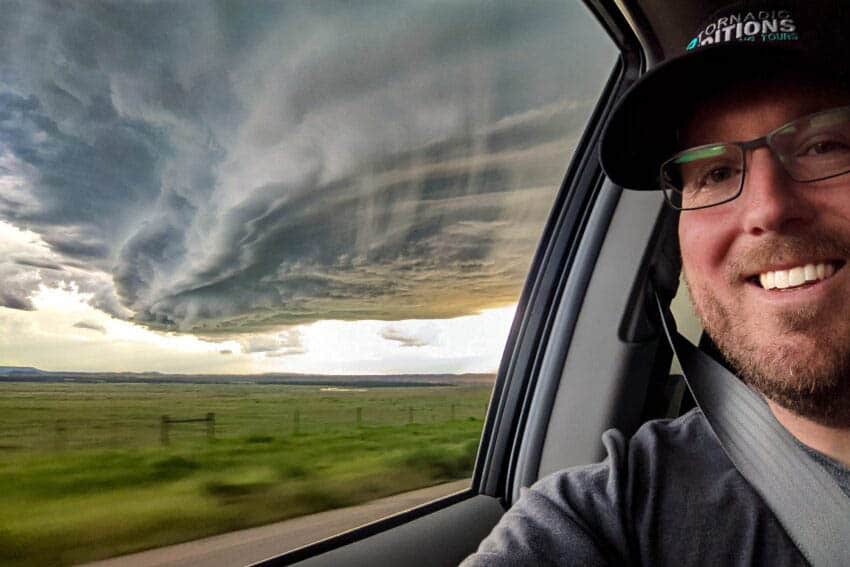
Erik Burns of Tornadic Expeditions Explains What You Can See on their Tours
By Chin Liang

Erik Burns is the Owner and Tour Director at Tornadic Expeditions Storm Chasing Tours. He has been storm chasing for 20 years and operating storm chasing tours since 2015.
“I have seen nearly 300 tornadoes, chased category 4 Hurricane Harvey in 2017 along the Texas Coast, and chased storms in Australia,” he said in a recent interview.
Storm Chasing Supercells
Storm chasing is the active pursuit of finding and documenting severe weather phenomena, such as supercells thunderstorms, tornadoes to hurricanes, and blizzards.
Most storm chasers, including Tornadic Expeditions, focus on supercell thunderstorms and tornadoes.
Burns said that people from all walks of life chase storms, from high schoolers all the way up to CEOs. There is no specific demographic group that enjoys storm chasing.
They do this for pleasure and enjoy the power of Mother Nature, research purposes, and capturing the perfect photograph or video.
It is a well worth every penny experience
Storm chasing and conducting tours are a very high overhead activity/business. From paying guides to insurance premiums, vehicle maintenance, exorbitant hotel costs, fuel, marketing, website/SEO and more are the reasons why storm chasing tours are pricey.

Included in the Tornadic Tours
|
“We start off with a meeting about the outlook of the chase and head out to our target area where our forecast shows the best conditions for severe weather and hopefully, tornadoes.
We always try to be in the areas where we believe there will be higher chances of seeing a tornado but not every chase is conducive to such conditions. Some days large hail and damaging winds will be the main show, some days it is all severe hazards.”
The drive to the target can be as short as half an hour, in most cases, it is several hours away. It is not uncommon to drive for 12 to 15 hours a day. On average, a 7-day tour will cover around 2,500 miles.
“The longest drive we had ever made was an astonishing 6,000 miles in 10 days,” Burns said.
It’s a chess game with the atmosphere
Storm Chasing is like a chess game with the atmosphere, whichever move it makes, a strategy is to be made for the next move – an addiction Erik can never get enough of. “Once storms begin, we position ourselves for the storm to come to our location. Our goal is to watch the storm’s entire lifecycle, from a towering cumulus cloud to a mature supercell to its death.
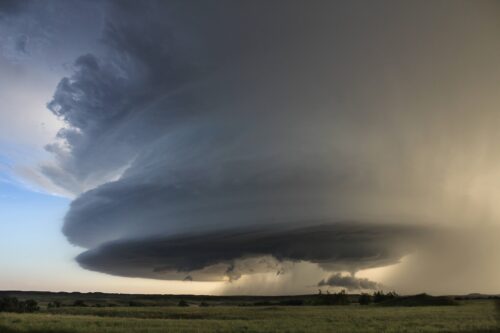 Some only last a couple of hours, and some last all afternoon into the evening.”
Some only last a couple of hours, and some last all afternoon into the evening.”
“We stay at a different hotel each night and sometimes a different state each day. It is not uncommon to cover four or more states during a storm-chasing tour,” he said. “We go where the weather takes us. Each day is another story waiting to be told.”
Off-the-beaten-path Sightseeing
The sightseeing aspect is a massive bonus of the tour. The Great Plains are so diverse, from the Caprock of Texas to the flat farmlands of western Kansas.
The Badlands, and the Black Hills of South Dakota plus endless long stretches of scenic drives through Nebraska and Montana.
It’s a great way to see so much in so little time.
“About 70% of our guests are from overseas. They got to see a side of the United States they would have not seen otherwise if it wasn’t for the tour,” Burns said.
Many friendships have been made along the way. Everyone went from being total strangers to becoming a family. Many people become lifelong friends to the point that they plan return storm chasing trips together or even plan get-togethers outside of storm chasing.
A Humble Beginning that turned into Much More
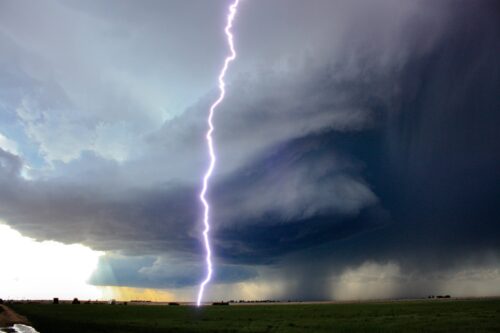
“The very first seven days of my tour career taught me so much, not only about tours and weather, but finding a sense of purpose,” Burns said. “Nowadays, we nearly sell out our seats a year in advance and have a waiting list for available seats. However, the first year I only booked five people for the entire season.”
Erik’s first booking was from a gentleman from New York and a tour member from Sweden. They joined Tour 4 running from mid-May to the end of May.
During the 7-day tour, they chased 6 of the 7 days and witnessed around 20 tornadoes, many amazing supercells, hail to the size of baseballs, amazing lightning, and damaging winds. The compliments and smiles made me feel better than the storm itself.
“We always hear people say – Never turn your passion or hobbies into a job. They will turn into work. I do not agree with this notion. If you are truly passionate about something, you will never grow tired of it. You will work harder than you ever have because passion will take you to places you didn’t know you could reach!”

Setting Realistic Expectations
“We set realistic expectations for our guests by having a presentation about safety, severe weather terminology, storm anatomy, and the science behind what we are doing before each tour,” Burns said.
Unfortunately, not every tour sees a tornado, and even they are seen, many are underwhelming. The supercells that produce the tornadoes are often more impressive than the tornado. “Many people expect to see what they see on TV or in the movie Twister or Into the Storm. The presentation is meant to get everyone on the same page.”
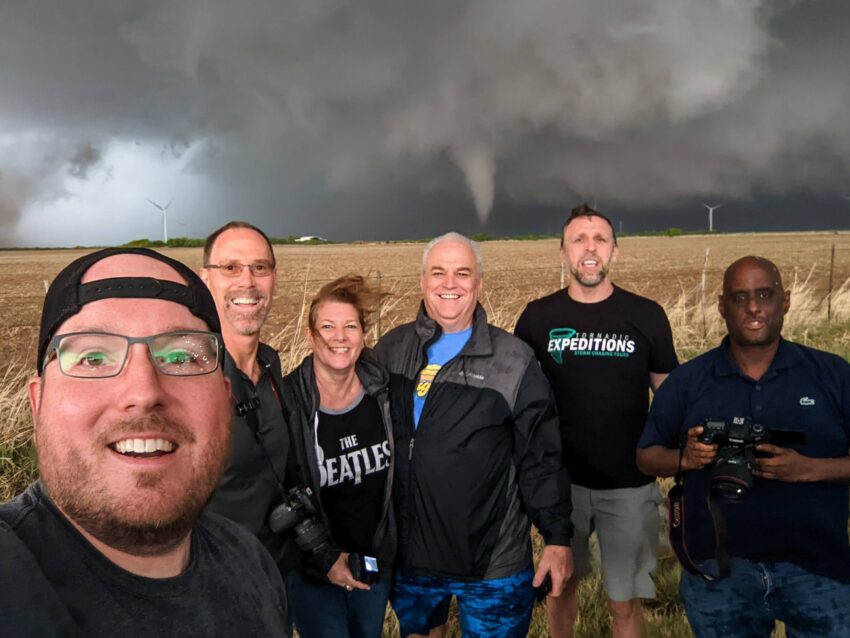
It could be a spiritual experience
“I want people to feel alive, free, and empowered by the incredible free-spiritedness of chasing. I want folks to go home and find something in themselves they always knew they had but couldn’t find.”
Seeing supercells and severe weather up close and personal is a bit of a spiritual experience for many.
“I saw many tears of happiness from people seeing their first tornado or big supercell. It tends to bring out something special in people.”
Purpose, location and the length of time are key factors
Key things to consider are the length of the tour, location and time of the season.
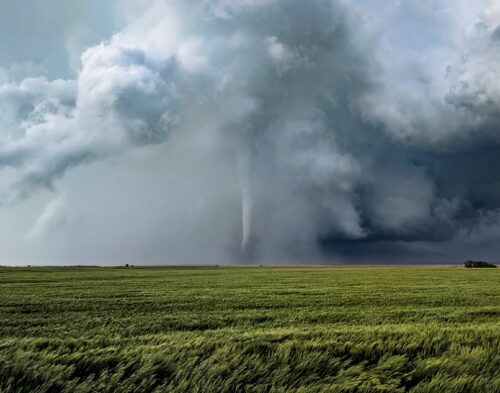
Ask yourself “What do I want to get out of my tour?” and “What is my main goal?”.
For example, a photographer who wants the perfect shot of a supercell storm. His main goal is clarity, time with the storm, and unique shot opportunities. Tours in June and July typically offer better photography opportunities. The air is less hazy being further away from the Gulf of Mexico with low moisture levels.
If a photographer chose a tour in April or May, the storms could often have less visibility, they can be faster moving and not as photogenic.
“Don’t get me wrong, great photography moments are abundant throughout storm season, but the bulk of the truly great opportunity is more typical during those later tours,” Burns added.
What if you are not a photographer, and only want to see some severe weather — then all the tours on the schedule will get the job done.
“The longer you’re out, the better the odds of seeing a tornado. Out of all our 10-day tours over the years, only one we had not seen a tornado,” said Burns
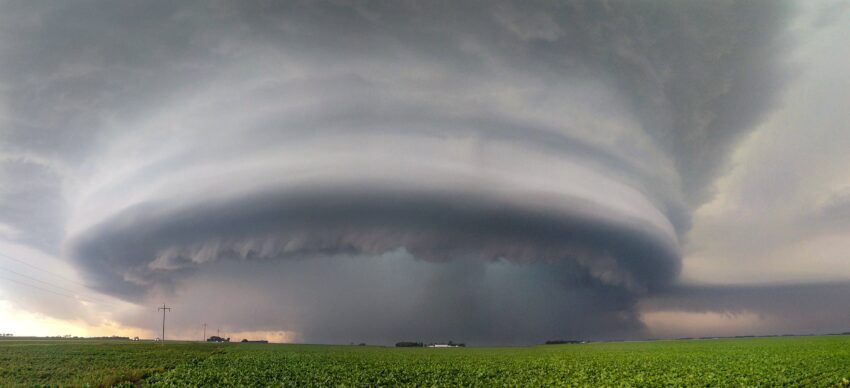
Tornado Warning Guarantee
“We are the only tour company with a legitimate “Tornado Warning Guarantee”. Meaning if you are not placed on a storm that was tornado warned by the National Weather Service, you will receive a heavy discount on your next tour.”
“Going into our 8th tour season, we have only had one tour that was not placed on a tornado-warned storm.”
Lastly, consider location. If one has been to Oklahoma many times and want to see something new, the try a tour based out of Denver or Rapid City. Seeing new places during your trip adds a whole new level of excitement.
“Before tours begin and between each tour, we will have our vans serviced and heavily inspected for any needed repairs and maintenance to ensure they are in excellent condition,” Burns said.
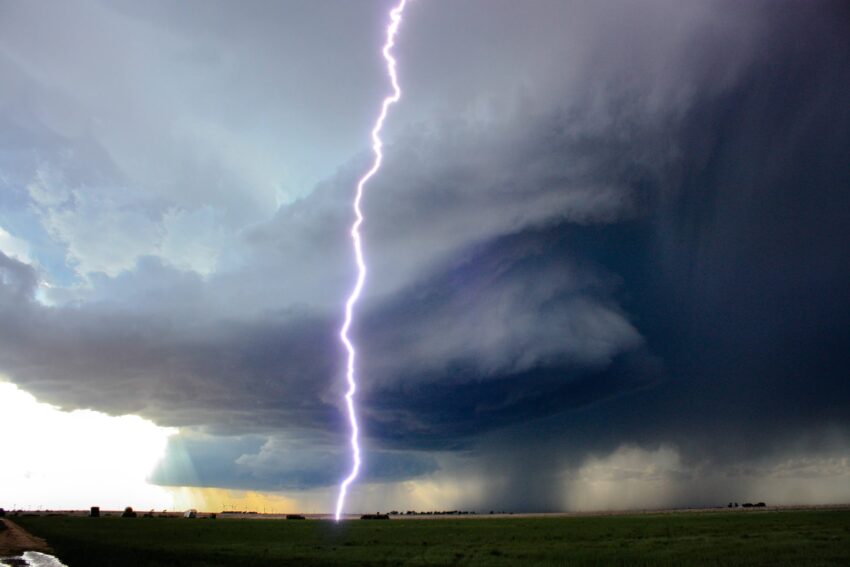
Guests will be contacted in the days leading to their tour with arrival details, so they are all set when they make it to the base city.
“The other guides and I start to put together travel and forecasts for the first couple of days of the upcoming tour. As one tour season ends, the next one begins before any guests even get on a plane to head over,” said Burns.
“The big picture is a constant motion of steps leading to crunch time and when all put together correctly makes for a smooth and well-executed storm chasing tour season”
It is safer than you think
There is a public misconception about storm chasing being extremely dangerous and deadly. Storm chasing is, in fact, very safe. Since the 1950s. There have only been three deaths in an actual storm-related incident.
The dangers of chasing are not much different than a commute to work. Driving is the single most dangerous aspect of chasing. Most chaser deaths happen while they are on the way back from the chase. Deer, drunk drivers, and distracted drivers are the biggest root causes.
What is the best time to chase storms?
Some years it is the last week of May, some it’s in April, the last few years – July in the Midwest has been really on fire.
“We begin our tours around April 20th each year and end them around July 20th. This period has the highest frequency of severe weather. There is a geographical severe weather peak going somewhere in the Great Plains,” Burns said.
Typically, the best times are April for Texas and Oklahoma. May for Texas, Oklahoma, Kansas and Nebraska. June from Kansas to North Dakota, Colorado into Montana. July for Wyoming, Montana, and The Dakotas into Minnesota and Iowa.
Of course, there are variations to this, but overall, it is a consistent pattern that has been recognized over years from storm reports and record keeping. “We operate 8 tours a year varying from 6, 7, and 10-days. The base city of each tour is designated based on statistical severe weather peaks” he said.
“Our first five tours begin in Oklahoma City. The next two tours are out of Denver, Colorado and the final tour in July is based out of Rapid City, South Dakota.
As the storm season progresses, the jet stream migrates northward. We follow this yearly migration of the jet stream and the accompanying storm systems it brings with it.”
For more information on the tours, please visit www.tornadicexpeditions.com/
Teh Chin Liang is a long-time travel journal contributor to Dave’s Travel Corner and Global Travel Insider. Besides travel journals, he loves writing prose and poetry. When he is not writing, he enjoys reading and traveling to get inspiration for his writing. He lives in Penang, Malaysia, a scenic island city that is also a UNESCO heritage site.
- Penang’s Chinese New Year Extravaganza! - March 30, 2024
- Hidden Gems Along Istanbul’s Golden Horn and Eyüp - March 3, 2024
- Dining with Locals in the Faroe Islands - February 19, 2024



I have always been interested in the many ways mother nature presents the weather. Since I live in Michigan, we don’t experience a lot of extreme weather conditions. Hot in the summer and cold in the winter is about it. Although I’m not sure if I would go on this kind of adventure, haha!!.. yeah right …. I would go in a heart beat. I found article very interesting and well written. Chin Liang did an excellent job telling the story of the life of a Storm Chaser. I must say…Erik Burns of Tornadic Expeditions Storm Chasing Tours has a very cool job.
After watching the wizard of Oz, I have a fear on tornado, fear that if this thing happen. There’s no way I could come back home, nor I want to spend time with a tin man. Even to this day, looking at tornado tail give me the goosebumps. I am happy to see, you guys has master the art of tornado, even make a tour for it. I wish I could join the tour and face up my fear. Kudos guys! It is indeed unique and once in a lifetime experience.
I witnessed several tornadoes over the years in Indianapolis Indiana. The soft green sky and the total calm before the storm is almost utter worldly. I would love to go on one of these expeditions with my friend Teh Chin Liang .who is mentioned in the pod cast.